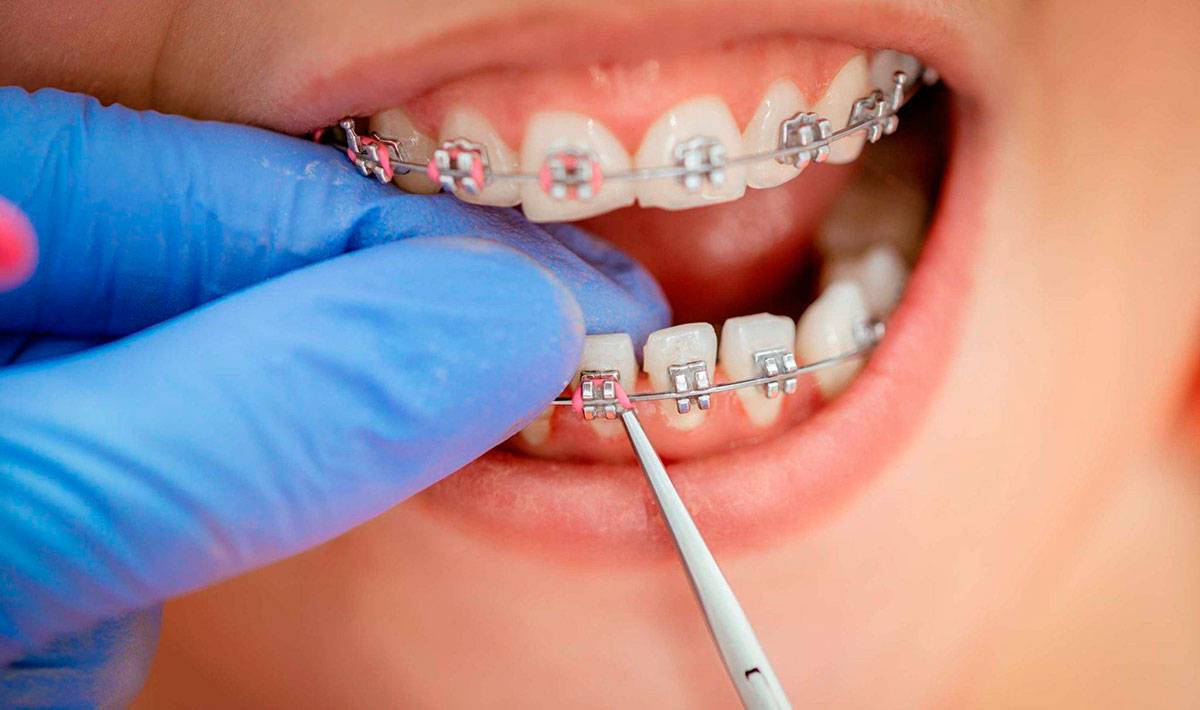When a person has an abnormal bite and their teeth grow crooked, everyone knows what to do about it: get a bracket. “But if the problem is minor, for example, only one canine protrudes, why put the system on the whole tooth row?” – you ask.
So, whether it is possible to put just one brace and what ways to treat localized bite disorders exist today – let’s understand.
Design of the bracket system
To answer the question of whether it is possible to install braces on a single tooth, you need to understand what a bracket system is and how it works.
The classic design of the system consists of brackets (locks), an arch and ligatures – rubber bands, with the help of which these locks are attached to the arch. If instead of ligatures, retainers are used, such a system is called ligatureless. At first glance it seems simple enough, but in fact it is a complex, programmed design that allows you to move your teeth in any direction.
How a bracket system works
If we glue a bracket on one misaligned tooth, it cannot correct its position by itself. It requires an arch. It is it that moves the teeth, pressing on them with a certain force. But the force of the arch can only be properly realized if there is a good support. Imagine, we put braces on two teeth, one of which is unevenly positioned, the other – evenly. The arch will start to press on the uneven tooth, then the recoil will go to the neighboring, even tooth. As a result, it will change its position and the entire treatment will be wasted. That is why the system is installed on at least three teeth, one of which should be moved, and the two neighboring, on the sides should serve as a support.
Hence the conclusion:
Braces for one tooth is something from the world of fantasy or the patient’s personal wishes, but it has nothing to do with competent orthodontic treatment. A system that is placed locally on a few teeth is called partial. In case of a minor or localized defect of the dentition, this is the best option.
Indications for a partial system:
- gaps
- tilt
- rotation
- protrusion
- minor tooth curvature
It is important that the patient has no oral infection and all teeth are healthy before treatment begins.
Certain conditions are necessary for the appointment of a partial construction. The interlocking of the molars must be correct. The orthodontist also pays attention to the exact location of the canines. But, unfortunately, such an ideal situation is extremely rare – only five percent of patients. In other cases, doctors still give preference to the conventional system.

Stages of treatment
To prescribe treatment, the specialist needs to get an accurate picture of the pathology of the bite. For this purpose, preparation is carried out, which consists of several stages:
- visual inspection
- manual examination
- taking impressions, making plaster models of dental rows
- teleradiography and computer tomography
- accurate diagnosis
- selection of a system based on the diagnosis and wishes of the client.
Partial braces, like regular braces, can be metal, ceramic, sapphire, and lingual. Choose what suits you in terms of price and aesthetics.
The preparation stage is followed by the fabrication of the structure and its installation. The installation procedure is completely painless. On each tooth with the help of a special glue a lock is fixed. The locks are connected to each other with an arch. This construction creates pressure on the “crooked” teeth, and they gradually move in the desired direction.
The period of treatment with a partial system depends on the pathology and age of the patient, but, as a rule, does not exceed 10 months.
Partial braces are often put on children from 8 to 10 years old. By this time, as a rule, all the milk incisors have already changed into permanent ones, the last chewing teeth have erupted, and this is an important condition for the installation of this design.
Pros of the partial system:
- affordable price
- short treatment time
- minimal discomfort
- quick adaptation

What additional treatment options are available
Modern orthodontics is not just about braces, which some patients feel like a sentence to wear. Minor and localized bite defects can be successfully corrected with removable orthodontic appliances such as eliners and elastopositioners. Both are mouth guards made of a transparent bioinert material. They are easy to remove when needed, easy to care for, do not darken, do not absorb odors, and these are their advantages.
Eliners are customized invisible mouth guards to correct various bite abnormalities. We talked about them in great detail in our previous article. And elastopositioners are a multifunctional device that is additionally used in orthodontics for weaning a child from bad habits, stimulating the growth of the lower jaw, in snoring, mouth breathing in children or as a retention structure.
The elastopositioner is available in several sizes and is used alone throughout the treatment period. Only a doctor can prescribe and select the right size of the device and only when indicated.
To avoid guessing whether a partial bracket, eliner or elastopositioner is appropriate in your case, consult an orthodontist. The specialist will identify the cause of the pathology, make the correct diagnosis and offer the ideal treatment option.




